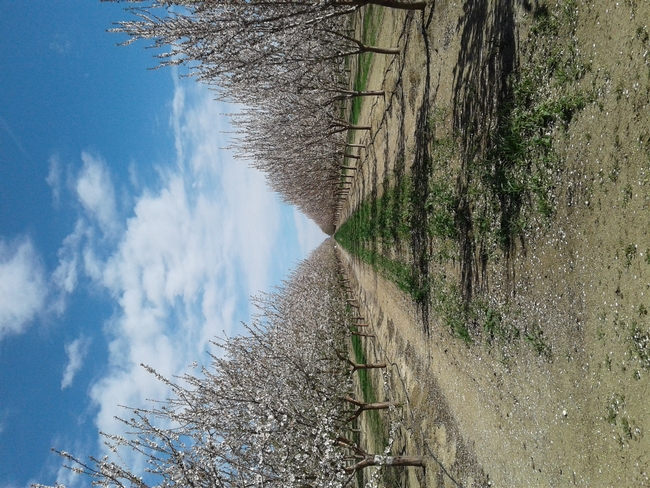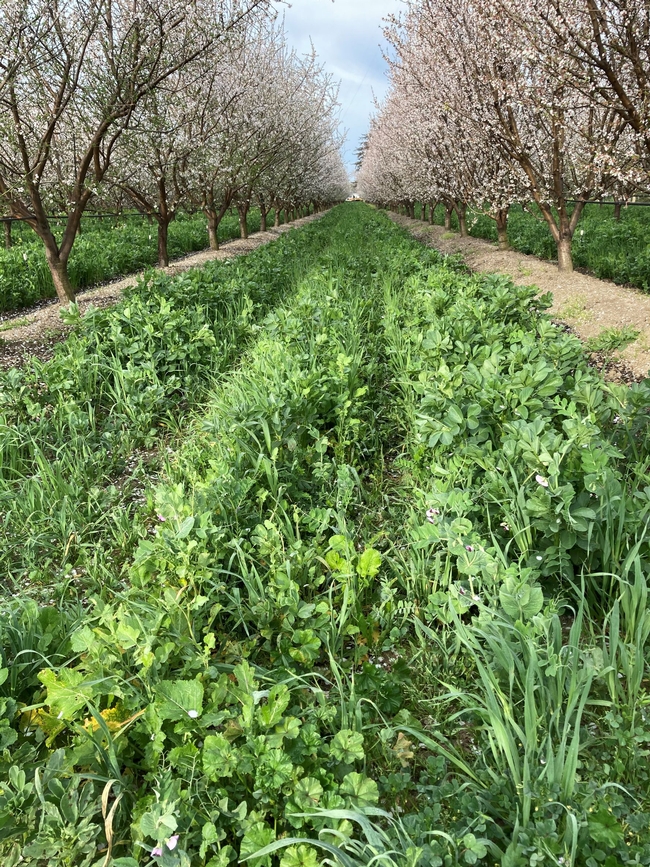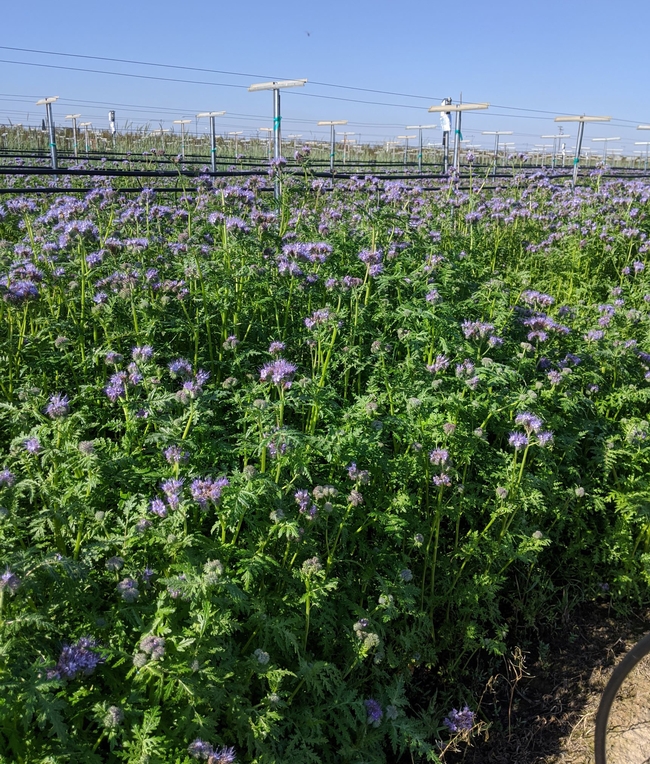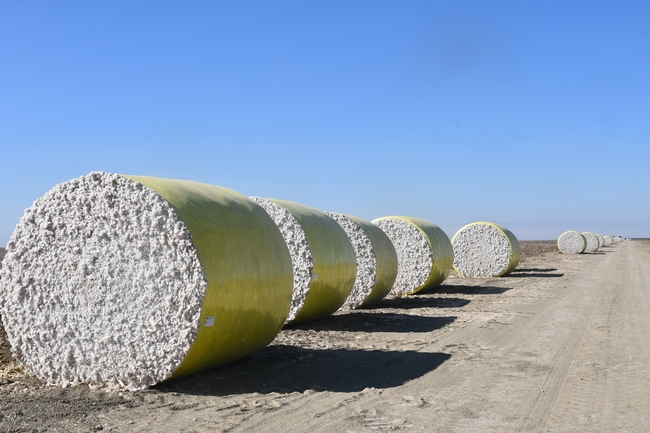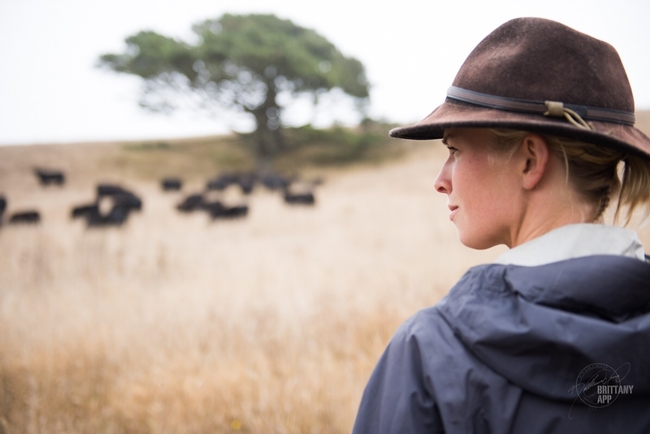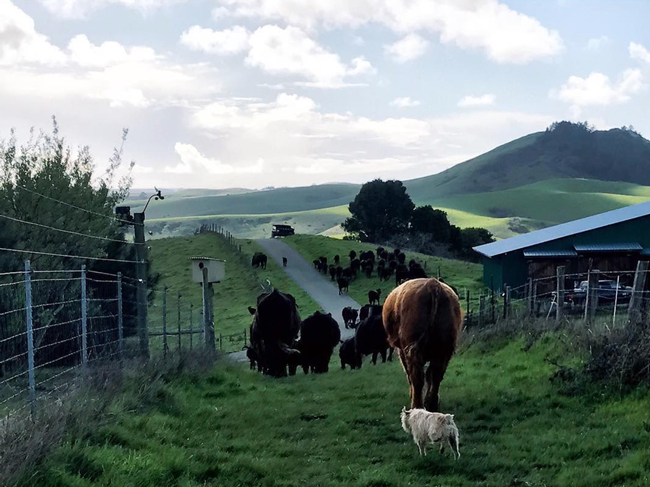Posts Tagged: sustainable
Your water-efficient landscape doesn’t have to be barren
UC climate-ready landscape trials identify low-water yet attractive plants
Good news: roses can be a part of your water-efficient landscape. Lorence Oki, UC Cooperative Extension environmental horticulture specialist in the UC Davis Department of Plant Sciences, identified rose cultivars that remain aesthetically pleasing with little water.
Oki is the principal investigator of the Climate-Ready Landscape Plants project, which may be the largest irrigation trial in the western U.S., and the UC Plant Landscape Irrigation Trials (UCLPIT), the California component of that project. These projects evaluate landscape plants under varying irrigation levels to determine their optimal performance in regions requiring supplemental summer water.
“There are some assumptions that pretty plants use a lot of water, like roses,” Oki said. “Everyone thinks they need a lot of water, but we've found some that don't, and they still look great. A water-efficient landscape doesn't need to look like a Central Valley oak-grassland in the summer. It can look really attractive.”
In 2021, Oki's team at UC Davis identified Lomandra confertifolia ssp. pallida "Pom Pom" Shorty and Rosa "Sprogreatpink" Brick House® Pink as two of the best low-water plants in the trial.
“The useful tip or information that is shared at the end of each trial is the selection and designation of plants as Blue Ribbon winners. These are the plants that looked good with an overall rating of 4 or higher throughout and were on the low (20%) water treatment,” said Natalie Levy, associate specialist for water resources, who manages the project at the UC ANR South Coast Research and Extension Center.
How plants earn a blue ribbon
Each trial year, the selection of new plants is based on research recommendations and donated submissions from the nursery industry. The landscape plants are trialed in full sun or 50% shade cover.
Irrigation treatments are based on the rate of evaporation and plant transpiration (evapotranspiration) measured through a local California Irrigation Management Information System (CIMIS) weather station that provides a reference evapotranspiration (ETo) rate.
Three levels of irrigation are provided to the plants equal to 20%, 50%, and 80% of ETo. The volume of water applied is the same at each irrigation based on soil characteristics, but the interval between applications varies with weather and the treatment. Using this method, irrigations for the 20% treatment are less frequent than the 80% treatment.
“The 20% treatment during the 2022 trial was irrigated an average of once per month while the 80% treatment was irrigated weekly,” explained Levy.
During the deficit irrigation trial, monthly height and width measurements are taken to determine the plant growth index. Monthly qualitative aesthetic ratings on a scale of 1 to 5 are determined for foliage appearance, flowering abundance, pest tolerance, disease resistance, vigor and overall appearance.
A second round of flowering abundance and overall appearance measurements are also taken to capture more of the blooming period. For example, UCLPIT identified in the 2020 trial at South Coast REC that the "Apricot Drift" rose had a mean overall appearance score of 3.5 out of 5, deeming it “acceptable to very nice” and a low water use plant within the Water Use Classification of Landscape Species or WUCOLS guide.
Project expands options for landscape planting
“(WUCOLS) only has 3,500 plants in it. There are guesses that there are close to 10,000 cultivars in urban landscapes in California, if not more,” said Oki. “WUCOLS also didn't have numerical ratings. Instead, you'll see verbal ratings like ‘low water use' or ‘high water use.'”
The UCLPIT project has not only developed numerical recommendations for irrigation, but it has also added new landscape plants that are compliant with California's Model Water Efficient Landscape Ordinance. In fact, UCLPIT's data is one of the few sources that can be used to supplement WUCOLS.
Geographic diversity of trial sites adds to knowledge base
In addition to UC Davis and South Coast REC in Irvine, the trials have expanded beyond California as the Climate-Ready Landscape Plants project and is in progress at Oregon State University, University of Washington, University of Arizona and Utah State University thanks to a USDA/CDFA grant awarded in 2020.
Lloyd Nackley, associate professor of nursery production and greenhouse management at Oregon State University, is the principal investigator of the trial in the Portland metro area, which is entering its third year.
“People know that there are drought tolerant plants, but there are many. We're trying to highlight lesser known or newer varieties. And even though the trial is three years, most gardeners would hope that their garden lasts longer than that,” said Nackley.
One of the observations that Nackley recalls is of the Hibiscus Purple Pillar plant. Unlike the trial at South Coast, the Purple Pillar did not perform well in Oregon in the spring.
“It wasn't until August that we saw the plant bloom and begin to look like what we saw from South Coast in April,” Nackley said.
Ursula Schuch, horticulture professor and principal investigator of the trial taking place at the University of Arizona, was also surprised at the range of performance among different plant types and the effects of irrigation, heat and temperature.
“This research will reassure green industry professionals that they can stretch their water budget to successfully cultivate more plants, watering them according to their needs instead of irrigating every plant according to the highest water-using plants,” said Schuch.
Although research is only conducted in the West, the hope is that there will be trials in other regions of U.S.
Doing so would yield comprehensive information about the plants and their performance in different climates. As extreme weather events persist in the U.S., disease pressure and risks do too. Trials throughout the country would provide location-specific data regarding disease susceptibility.
To learn more about the UCLPIT research project, visit https://ucanr.edu/sites/UCLPIT/
Can California native plants be used as cover crops to benefit farmers and native ecosystems?
In late February, in an almond orchard in the Sacramento Valley, the fall-planted cover crop mix of grasses, brassicas and legumes had barely produced a green fuzz above the soil surface, and it was unclear when it would bloom. Unfortunately, this scene is becoming more frequent across California, as climate change causes more prolonged droughts and rain-dependent winter cover crops can barely grow, which delays or reduces bloom, essential for supporting pollinators. Fortunately, California native plant species have evolved with drought and have developed many strategies to survive and reproduce in those conditions.
Would it be possible to capitalize on the over 9 million acres of cropland in California for drought resilience and habitat restoration by utilizing more native species as cover crops? Our team at the UC Sustainable Agriculture Research and Education Program (UC SAREP) spent some time considering various native plant species and their potential ecological and operational attributes as cover crops. For a full list of species and their attributes, see https://ucanr.edu/sites/covercrops/.
Many native species are so well adapted to drought that they will still germinate and bloom during extremely dry years, for example, annuals like Tidy Tips (Layia platyglossa) and California poppy (Eschscholzia californica). Alternatively, perennial bulb species like Prettyface (Triteleia ixioides) and Bluedicks (Dipteronstemon capitatus) become dormant during the dry summer, retaining their bulbs below ground and re-growing when the rains return. These species could perhaps fit well in no-till orchard systems. Summer dormancy is important for tree nut growers because they usually need clean ground under the trees during harvest. Moreover, the costs to terminate and reseed would potentially be eliminated. While these species are well-known by Native Americans for their edible bulbs, at this point in time, we are not aware of any cover cropping trials having ever been conducted with these species.
Another species with strong reseeding and more availability is the annual Lacy Phacelia (Phacelia tanacetifolia), which offers an intriguing historical precedent for developing a native species for cover cropping purposes. Native to California, it was introduced into Europe in 1832 by Germans. It is very attractive to pollinators and experienced a boom there in the early 1990s. European beekeepers and farmers have been using Lacy Phacelia as a cover crop ever since, and it has recently been gaining traction on California farms as well. California has many species of phacelia, with another, described as being even more attractive to native bees, being the annual Great Valley Phacelia (Phacelia ciliata). Besides supporting native bees, other native plant species can contribute nitrogen to the soil, such as annual Lupine (Lupinus spp.) and perennial Deerweed (Acmispon glaber), which are legumes and form an association with nitrogen-fixing bacteria in their roots.
Cover crops are not usually considered marketable crops. However, we should not preclude the potential for some plants that are useful as cover crops to provide a harvestable product as well. Native perennial fiber plants such as Indian hemp dogbane (Apocynum cannabinum), narrow leaf milkweed (Asclepsias fascicularis), and common nettle (Urtica dioica) could offer the opportunity to cultivate summer cover crops that have a market value, especially in cases where farmers are already willing to irrigate their cover crops to improve their development and amplify the benefits. Bowles Farming in the San Joaquin Valley is experimenting with growing these three species for fiber production. All three also attract native bees and important butterfly species such as monarchs (as long as farmers avoid spraying insecticides).
While we believe that some native species could open new opportunities for farmers as cover crops, we still have insufficient studies testing the effects and viability of these species. Organizations like the NRCS Plant Materials Center at Lockeford and the Xerces Society are conducting practical studies with native species, creating plant guides and working with farmers to expand their use. In addition, researchers Lauren Hale of the USDA Agricultural Research Service and Anil Shrestha of California State University, Fresno, are using a 2021 UC SAREP small grant to study the effects of native species mixes on water demand and weed populations in San Joaquin Valley grape vineyards. Hale suggests that below-ground ecosystems may benefit as much from native plants as above-ground ecosystems. Says Hale, “Because plants and their microbiomes have evolved together for millennia, it seems logical that native plants would promote a good response from the native soil microbiota.”
For additional information:
UC SAREP List of California Native Species for Potential Use as Cover Crops: https://ucanr.edu/sites/covercrops/
Xerces Society lists of pollinator-friendly native species for California: https://xerces.org/pollinator-resource-center/california
NRCS California Plant Materials Center plant guides: https://www.nrcs.usda.gov/wps/portal/nrcs/publications/plantmaterials/pmc/west/capmc/pub/
UC SAREP Cover Crops Database: https://sarep.ucdavis.edu/covercrop
California farmers to share their soil health handiwork
A group of California farmers will share their experiences improving soil health in cotton production by growing cover crops, reducing tillage, applying compost and other practices during an online session at 11 a.m. Feb. 23.
The free webinar is part of an eight-episode series titled Healthy Soils for Sustainable Cotton Farmer Showcase, in which U.S. cotton farmers and soil health experts are livestreamed at 11 a.m. (PST) every Tuesday through March 23. The program targets cotton producers, consultants and others interested in cotton production and soil health.
Registration is required. To register for sessions, visit https://soilhealthinstitute.org/soil-health-training/farmer-showcase/.
In the episode featuring the California farmers on Feb. 23, the panellists will discuss:
- Financial, regulatory and agronomic challenges of implementing soil health systems for cotton in the San Joaquin Valley
- Specific practices they are implementing and the outcomes
- Progress being made on more attractive pricing scenario negotiations underway with buyers to reward American cotton farmers for their sustainable production practices
Speakers are San Joaquin Valley cotton farmers John Teixeira, Cannon Michael, and Gary Martin; regenerative agriculture consultant Cary Crum; Sustainable Cotton's Marcia Gibbs; and Fibershed's Rebecca Burgess.
UC's Conservation Agriculture Systems Innovation Center is sponsoring the showcase in conjunction with the Soil Health Institute, a non-profit organization charged with safeguarding and enhancing the vitality and productivity of soils. The Healthy Soils for Sustainable Cotton project provides farmer-focused education and training events delivered by Soil Health Institute scientists, partnering with local soil health technical specialists and farmer mentors who have implemented successful soil health management systems. The project aims to increase the adoption of soil health management systems among cotton producers while documenting environmental and economic benefits.
Healthy Soils for Sustainable Cotton is supported by Wrangler® brand, the VF Corporation Foundation and the Walmart Foundation. For more information about the project, visit https://soilhealthinstitute.org/soil-health-training/.
About the Conservation Agriculture Systems Innovation Center
CASI is a diverse assemblage of California farmers, private sector, university, governmental agency and other group members who work together to develop and implement conservation agriculture systems in California. http://casi.ucanr.edu/
About the Soil Health Institute
The Soil Health Institute (www.soilhealthinstitute.org) is a non-profit whose mission is to safeguard and enhance the vitality and productivity of soil through scientific research and advancement. The Institute works with its many stakeholders to identify gaps in research and adoption; develop strategies, networks and funding to address those gaps; and ensure beneficial impact of those investments to agriculture, the environment and society.
About Delta F.A.R.M
Farmers Advocating Resource Management is an association of growers and landowners that strive to implement recognized agricultural practices which will conserve, restore, and enhance the environment of the Northwest Mississippi. For more information, visit https://deltafarm.org/.
About Wrangler®
Wrangler® apparel is available nationwide in mass market retailers, specialty stores, including work apparel chains, farm & fleet, and western stores, as well as through online and catalog retailers. To find a retailer or for more information on the Wrangler family of products, visit Wrangler.com or call 888.784.8571.
About VF Corporation
VF Corporation outfits consumers around the world with its diverse portfolio of iconic lifestyle brands, including Vans®, The North Face®, Timberland®, Wrangler® and Lee®. Founded in 1899, VF is one of the world's largest apparel, footwear and accessories companies with socially and environmentally responsible operations spanning numerous geographies, product categories and distribution channels. VF is committed to delivering innovative products to consumers and creating long-term value for its customers and shareholders. For more information, visit www.vfc.com.
About Philanthropy at Walmart
Walmart.org represents the philanthropic efforts of Walmart and the Walmart Foundation. By leaning in where the business has unique strengths, Walmart.org works to tackle key social issues and collaborate with others to spark long-lasting systemic change. Walmart has stores in 27 countries, employs more than 2 million associates and does business with thousands of suppliers who, in turn, employ millions of people. Walmart.org is helping people live better by supporting programs that work to accelerate upward job mobility for frontline workers, address hunger and make healthier, more sustainably grown food a reality, and build strong communities where Walmart operates. To learn more, visit www.walmart.org or connect on Twitter @Walmartorg.
Why Drones Are Important in Sustainable Agriculture in the 21st Century
Drones... If you're thinking of apiculture, you might be thinking of drones (male bees). But if you're thinking of agriculture--more specifically...
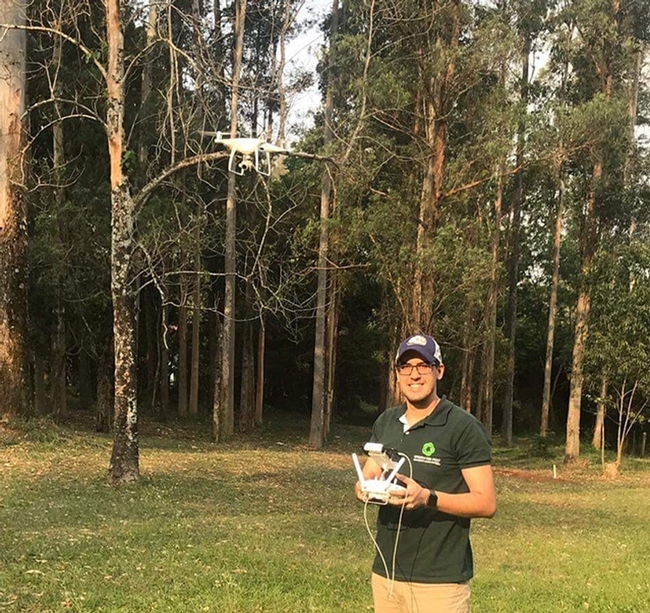
Lead author and entomologist Fernando Iost Filho of the Department of Entomology and Acarology, University of Sao Paulo, Brazil. He is a former UC Davis exchange student.
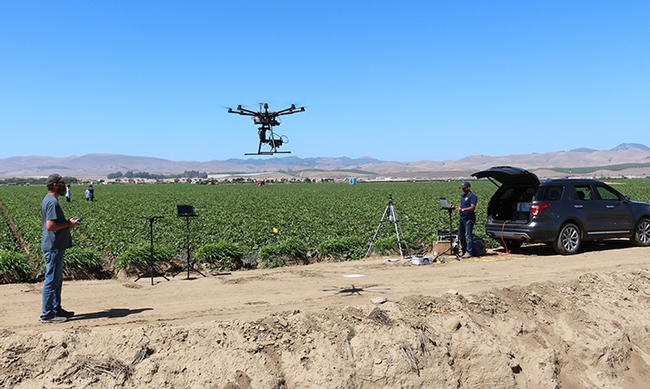
A drone over a Santa Monica strawberry field. Drones can target pest outbreaks or hot spots in field crops and orchards, the scientists pointed out. (Photo by Elvira de Lange)
Change on the range
“When first-generation ranchers succeed, we all succeed,” says Kate Munden-Dixon, a Ph.D. student working with Leslie Roche, Cooperative Extension rangeland specialist with the UC Division of Agriculture and Natural Resources and the UC Davis Department of Plant Sciences.
Munden-Dixon and Roche recently discovered that many new livestock managers aren't plugged into information networks such as UC Cooperative Extension and rancher coalitions that provide science and strategies for making sustainable rangeland management decisions. This lack of connection can make first-generation ranchers more vulnerable when dealing with challenges like drought and climate variability, according to their study, which was recently published in Rangeland Journal.
To help bridge the gap, Munden-Dixon landed a $25,000 Graduate Student Grant from Western Sustainable Agriculture Research and Education, a USDA program, to reach out to new ranchers and rangeland managers.
Why rangelands matter
More than one half of California — 38 million acres — is rangeland that provides open space, healthy watersheds, carbon storage, food, fiber and habitat for diverse plants and wildlife. UC Davis research indicates grasslands and rangeland have become more resilient at sequestering or consuming carbon dioxide pollution than forests in California, making them especially important in a warming world.
But rangeland and livestock production are at risk because more rangeland is being converted to housing and crop production. The average age of ranchers in California is 62, and fewer children are taking over the family ranch.
Enter a new wave of rangeland managers. Many of these young ranchers don't yet have access to the capital required to purchase land and large head of cattle and other livestock. Instead, they often contract with public and private landowners to graze goats, sheep and cattle to restore landscapes and reduce fire vegetation.
“What we really need is support in connecting land and contract opportunities,” says Brittany Cole Bush, an “urban shepherdess” and former contract sheep and goat grazer. She now consults with land owners and public agencies from her home base in Southern California. “We need market research that shows the value that grazing brings to fire abatement, soil conservation and so much more. Market research would increase our value and help us become viable players.”
Expanding Extension
Munden-Dixon is interviewing 40 new rangeland managers from across California to explore how decision-making by different demographics influences adaptation to climate change and quality of life. Munden-Dixon and her team are also hosting workshops to make sure Cooperative Extension specialists understand and can respond to all ranchers' needs.
“There is both a need and opportunity for a new generation of livestock managers that is able to adapt to California's changing climate,” Munden-Dixon says. “This next generation may not look like your typical rancher, so we want to ensure organizations are helping all ranchers succeed, regardless of their demographics or land tenure.”
The power of connection
Munden-Dixon would like to become a Cooperative Extension specialist herself one day. Working with first-generation ranchers reminds her that collaboration and public engagement are critical to addressing issues in sustainable agriculture.
“There is no one answer or single expert when it comes to building healthy food systems,” Munden-Dixon says. “We find solutions when we work together.”
See this story in the Fall/Winter 2018 issue of Outlook, a magazine from the UC Davis College of Agricultural and Environmental Sciences, and at the UC Davis Science & Climate website.






